Member of our team has decided to improve comfort of his mountain cottage placed in the Austrian Alps, using both wired and wireless communication. The project focuses on heating management, temperature and humidity measuring and monitoring of unwanted presence.
Project goals
Before the project’s creation, there is a few conditions to be considered and determined goals.
- Already built – the already mentioned mountain cottage has been built years ago. The goal is to make minimal adjustments of the building.
- Old boiler – water in central heating is heated up with a 30 years old oil boiler. Let’s use it instead of buying the new one!
- Remote control – owner does not live in Austria and remote control may come in handy as well as continuous monitoring.
- Equitherm regulation – the heating system needs to be smart and must be able to adapt to constantly changing conditions.
- Unwanted presence detection – whenever the cottage becomes a target of burglars, the system should contact us, so we can notify the police
As only a minimal building adjustments could be made, it was clear the wired technology couldn't be used. Because of that, we opted for the wireless technology via ZigBee wireless sensors. ZigBee is not a single product - it's a name of open wireless standard used for IoT applications. ZigBee device was chosen primarily because its open-source nature, as other devices (such as for example the Z-Wave) are using proprietary technology.
So...how did we build it?
Implementation
For a better understanding, we included a complete system scheme
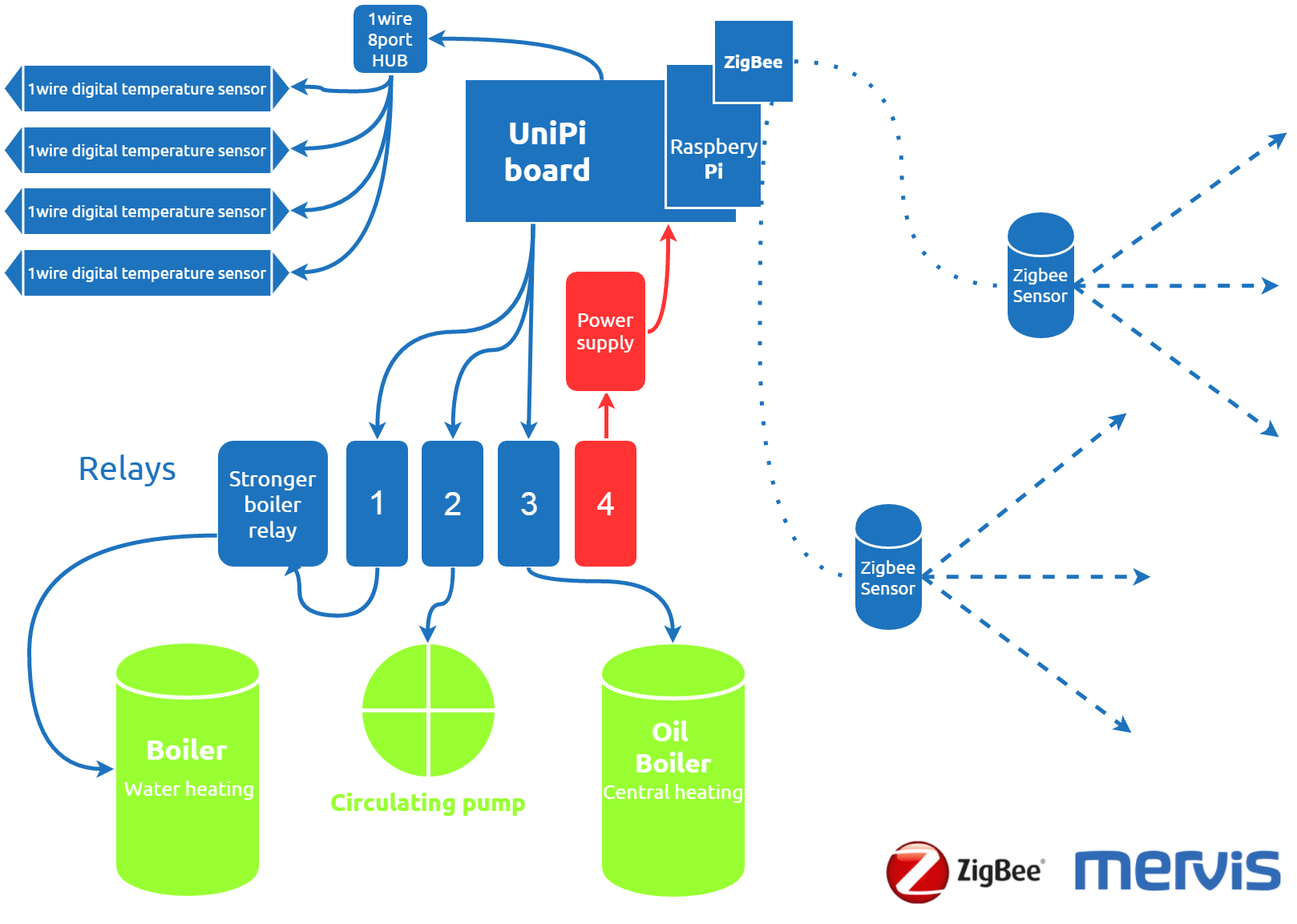
As a master control unit, a UniPi 1.1 PLC unit is used. It is basically an extension module, combining a Raspberry Pi with a board designed by us. More about it here.

For wiring, a single 1-Wire 8-port hub was used, connected to unit's single 1-Wire port. The hub then collects data from four digital 1-Wire thermometers. Additionally, we connected the Telegesis ZigBee ETRX357 module, controlling wireless components of the system.
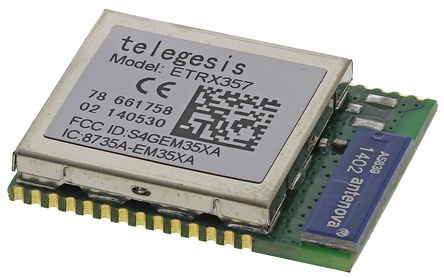
The whole system was placed into the distribution board, mounted onto a standard DIN-rail. On the picture below, a red rectangle marks the ZigBee wireless chip, mounted atop the UniPi. Four numbered relays below are each assigned with a different task:
- Relay 1 - water heater relay switch (left from the #1 relay)
- Relay 2 - circulation pump switch
- Relay 3 - oil boiler switch
- Relay 4 - UniPi power supply switch
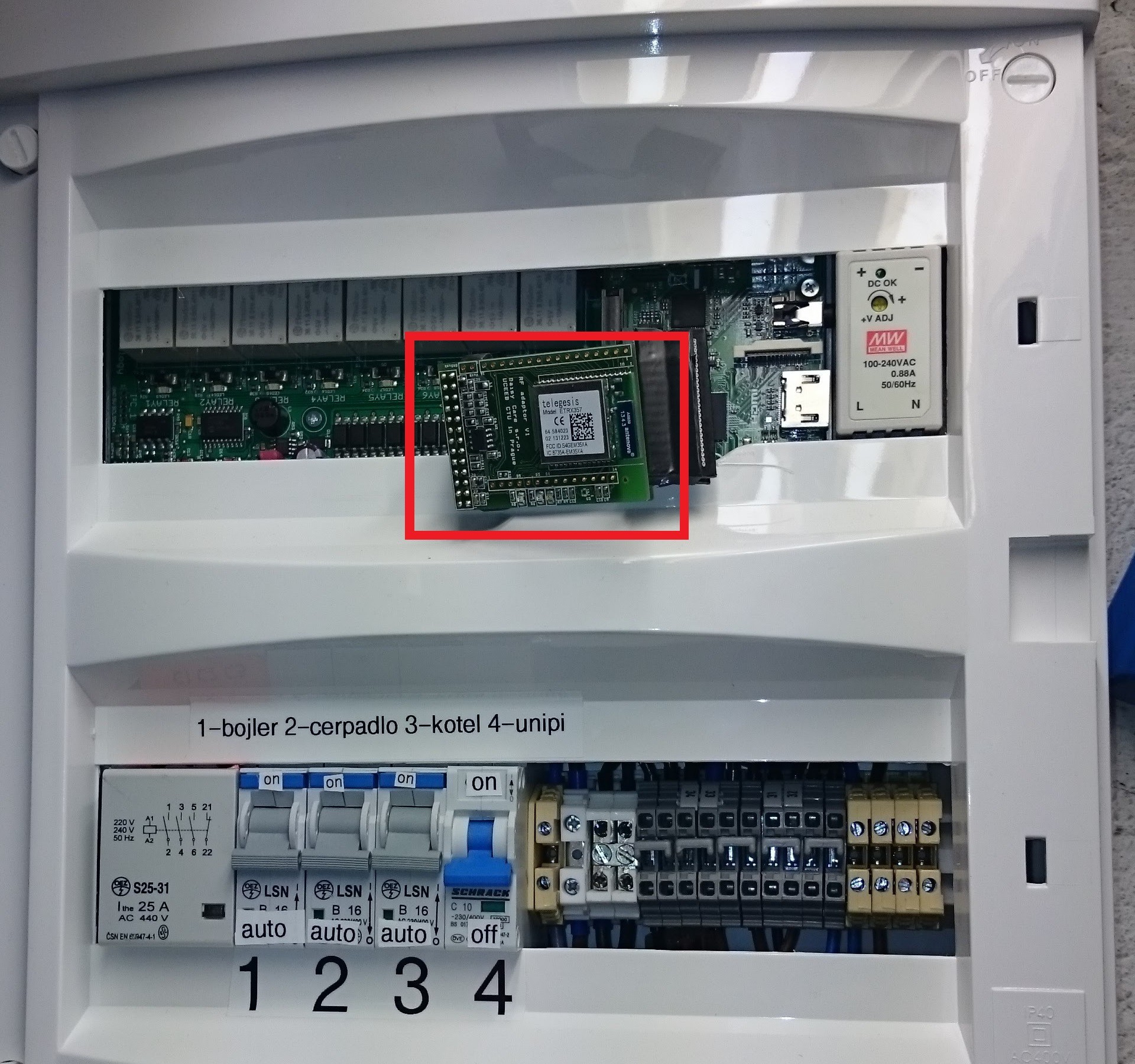
The whole system is designed to be controlled remotely, but allows manual control if needed. As to sensor suite, two NYCE Motion Sensors were used. Aside from motion data, they are also able to gather humidity and temperature readings as well:
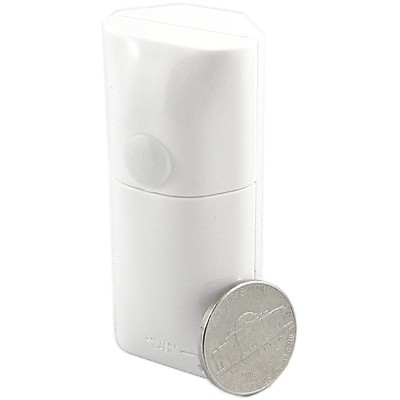
Software
The whole system is using Mervis PLC software produced by the Energocentrum company. Communication with devices is made via proxy server, displaying all data via SCADA system (Supervisory Control And Data Aquisition). All readings, be it temperature, humidity or movement data, are periodically logged into a cloud database, where you can sort it or filter it. It can be also accessed by a smartphone - in that case, the SCADA interface looks like this:
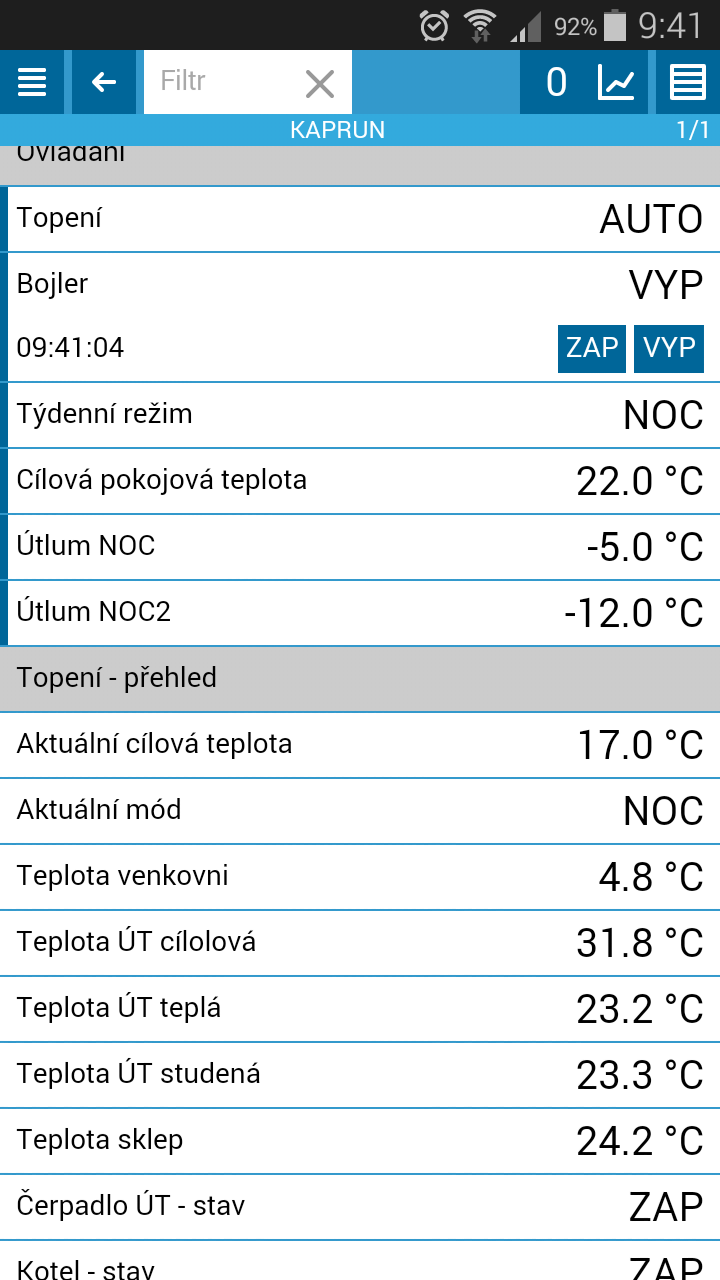
From the top:
- Heating status (ON/OFF)
- Water heater status (ON/OFF) + remote switch
- Preprogrammed heating scheme indicator
- Target room temperature
- Day/Night temperature difference (for two consecutive days)
- Actual target temperature
- Currently active mode (DAY/NIGHT)
- Outside temperature
- Target heating temperature
- Heating temperature - "cold" reading
- Heating temperature - "warm" reading
- Basement temperature reading
- Circulation pump status ON/OFF
- Boiler status ON/OFF
More about the Mervis here.
The resulting system allows user to control the cottage heating from every place on the world via internet connection. It also served us as a basis for other future projects, based on the same framework. Namely the Mervis would allow us to add watering system for the cottage's garden, or even fully autonomous heating connected to the weather forecast.
 Jan Kozák
Jan Kozák